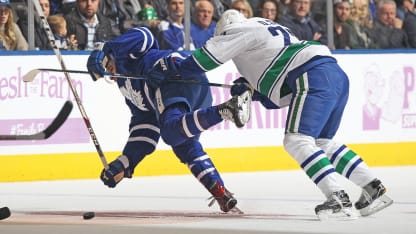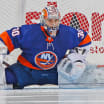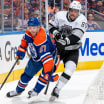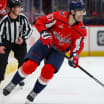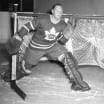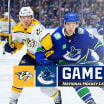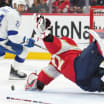Quintal and George Parros, a director of NHL player safety, met with Linden and Canucks general manager Jim Benning, then met with a small group of media from Toronto and Vancouver to expand on their decision to not suspend Kadri for the hit, which was delivered from Sedin's right as he shot and scored a goal in the slot off the rush.
They showed video of the Kadri hit on Sedin, and several others, explaining hits from the side can be legal when the opponent's head is not the main point of contact. Kadri contacted Sedin's shoulder first.
"If the majority of the hit, the brunt of the hit, is the head, obviously it's an illegal check to the head, but if it's the shoulder and then the head after, it is different," Quintal said. "He was very lucky, Kadri, like inches from getting suspended."
Quintal also clarified that it didn't matter that Sedin was not injured, or that Kadri was a repeat offender, unless the Department of Player Safety first determines the hit was illegal.
"Injury and repeat offender comes after," Quintal said.
Parros, who played nine seasons in the NHL before retiring in December 2014, reiterated that the amount of direct contact with a player's head was a key factor.
"We're already looking out for the head, so if a player is targeting the head, that is on our radar, we can suspend for that; taking advantage of somebody in a vulnerable positon, we can enforce that if they are targeting the head," Parros said. "It's hard to quantify what is blindside. That's why we took it out (of the wording in the rule)."
Parros said players appreciate the video examples he and Quintal shared.
"We need clarity," Parros said. "One of the best things this department has done is, it has been transparent and consistent, so when we make our decision on the Kadri hit, we are looking at tons and tons and tons of previous hits, comparable hits, we've got guys that have seen all the suspensions from 10 years ago up until now. We have a database growing, building and comparing against. So as a player that played under both systems, I think guys like to see the videos, I think guys like to see what we are thinking."
Parros also stressed the education of players that goes on behind the scenes.
"One thing I didn't know we did as much in this department … was education," he said. "If we see a player playing on the edge, we let him know, 'We haven't got you, but we see some things we don't like,' and this is how we encourage guys to hit and not rise up into the head and things like that.
"The department has done a great job of being transparent and being consistent."
